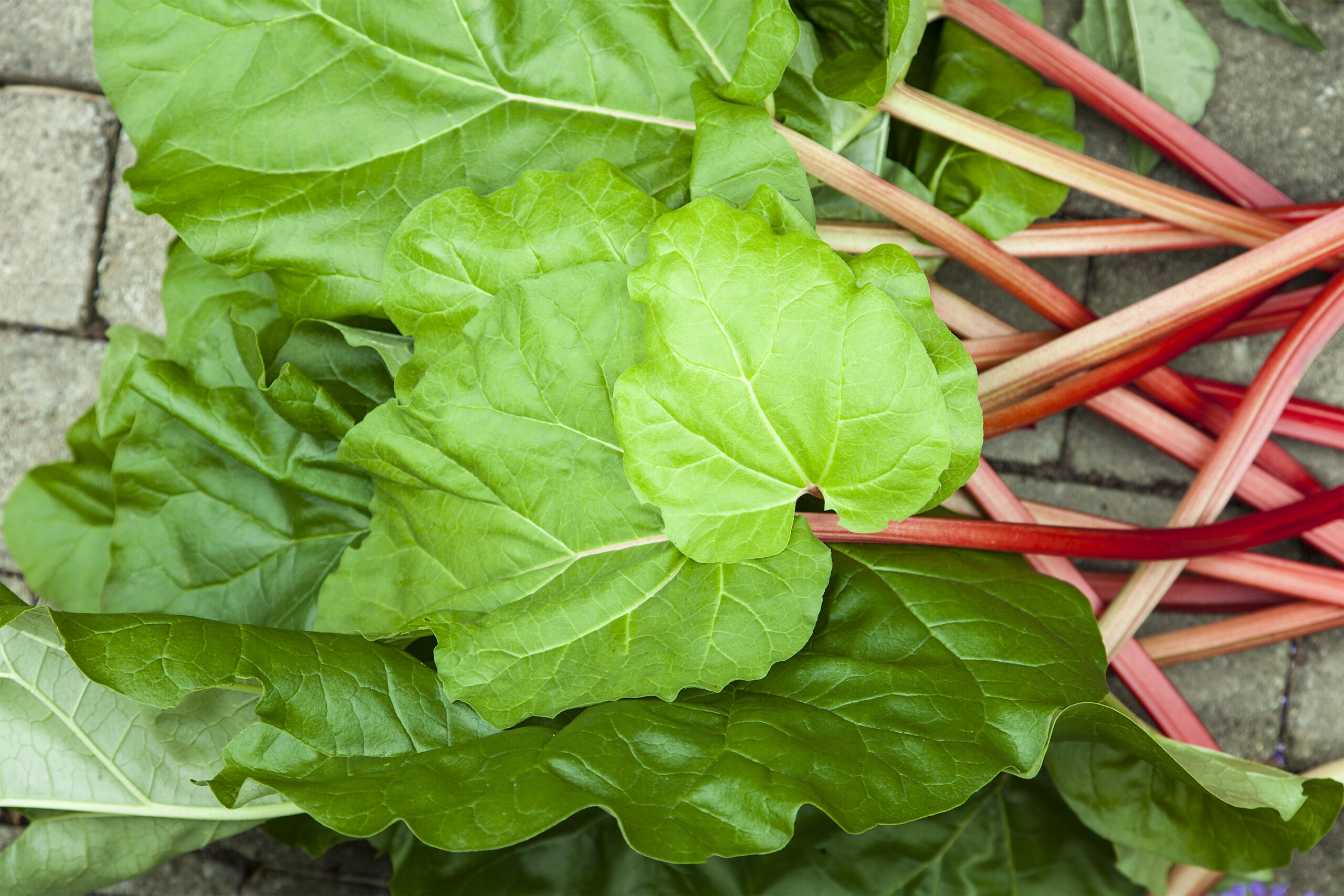Some of the links on this page are affiliate links, which means that Buzzy Kitchen earns commission from purchases made – at absolutely no extra cost to you. Thank you so much for supporting Buzzy Kitchen!
If you’re asking for my personal opinion, there’s nothing better than picking some ripe, red rhubarb from the garden and turning it into a delicious crumble, enjoyed with custard. But which bits of the plant can you really eat? And are rhubarb leaves poisonous?
Why don’t we find out a little more?
So, Are Rhubarb Leaves Poisonous?
Rhubarb leaves have the potential to be poisonous.
I know that doesn’t answer the question very well, but the answer is actually a little complicated.
Rhubarb leaves contain a substance called oxalic acid, which is known as a nephrotoxin – toxic substances or compounds that negatively alter the function of the kidneys.
The word – nephrotoxicity – literally means poisoning of the kidneys in Ancient Greek.
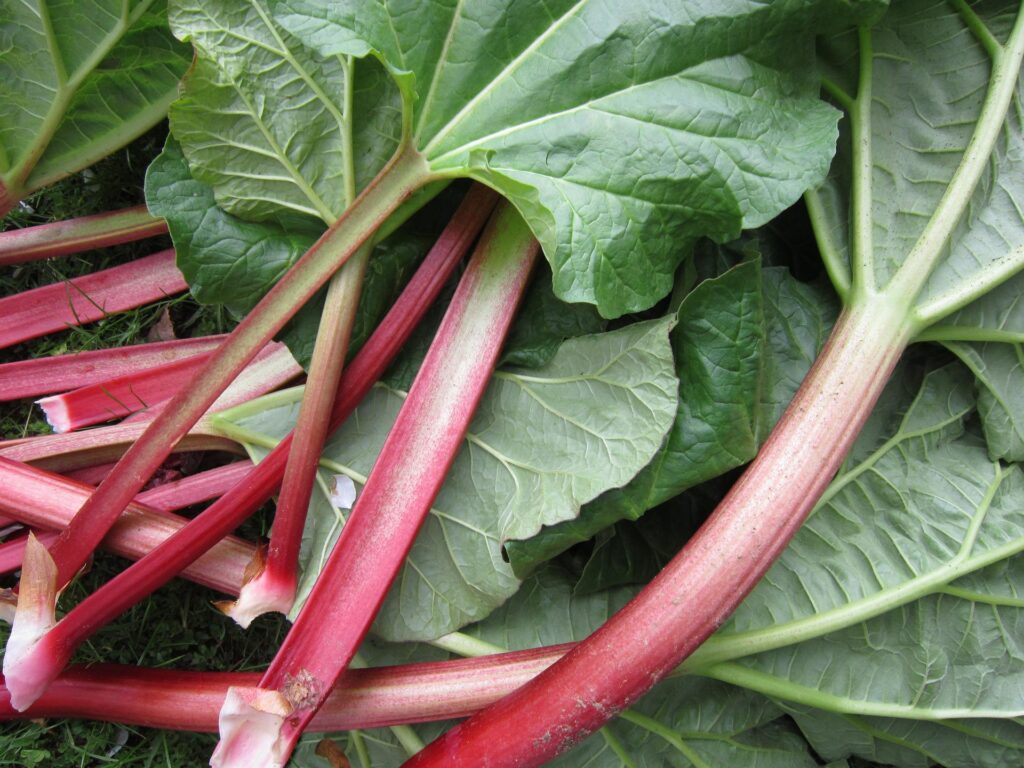
Image by Ulrike Leone from Pixabay
Rhubarb leaves are also believed to contain substances called Anthraquinone glycosides, although investigations on that particular theory are still underway.
Some experts believe that rhubarb leaves also contain additional substances or compounds that have not yet been identified, but cause harm to human (and animal) health.
One or all of the above-mentioned substances can be toxic to humans, although it is believed that you would need to eat quite a large amount of rhubarb leaves to feel the effects.
According to Mount Sinai’s health library, symptoms of poisoning from rhubarb leaves can include:
- Oral blisters that interfere with talking, eating, and potentially even breathing
- Burning sensation in the mouth and throat
- Diarrhoea, vomiting, stomach pains, and nausea
- Increased production of saliva
- Fatigue
- Pink or red-coloured urine
- Back pain
- Losing voice/croaky voice
In severe cases, rhubarb leaf poisoning can cause seizures, lack of consciousness, coma, and even death.
Death by rhubarb leaf poisoning is, fortunately, rare, particularly with timely diagnosis and appropriate medical intervention.
Are Rhubarb Leaves Edible?
It is not recommended to eat rhubarb leaves because of the potential risk of rhubarb leaf poisoning.
According to National Geographic, you would likely need to eat several pounds of rhubarb leaves to feel the ill effects of oxalic acid and other [potentially] toxic substances and compounds. It would require several pounds of rhubarb leaves to be consumed in one sitting, or even over a few days – more so than what you could comfortably or logically eat.
The chances of you becoming unwell as a result of eating a couple of rhubarb leaves is quite slim, but it is still not recommended to give them a try.
Are Rhubarb Leaves Poisonous to Touch?
No, rhubarb leaves are not poisonous to touch.
You are unlikely to suffer from any ill effects as a result of touching rhubarb leaves.
If you have an allergy to rhubarb (leaves, stem, or any other part of the plant), coming into physical contact with the leaves can cause an allergic reaction, such as anaphylactic shock. Although rhubarb allergies are rare, they can trigger just as severe reactions as other food allergies, such as peanuts.
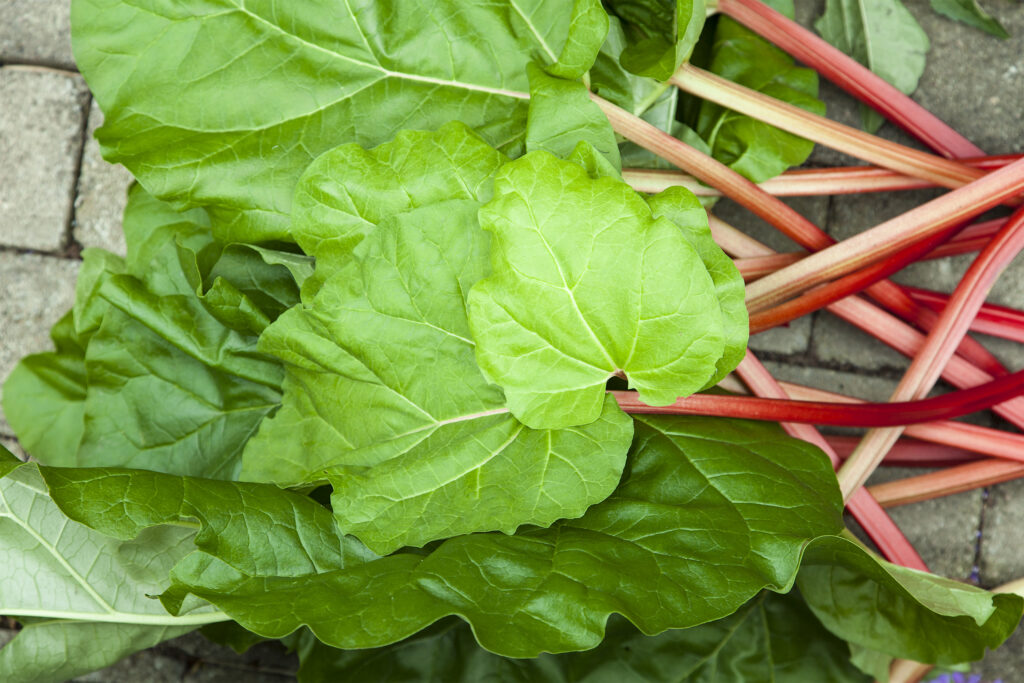
Which Part of Rhubarb is Edible?
It is recommended to only eat the pinky-red stem of the rhubarb plant.
Rhubarb leaves are not considered to be edible because of the risk of poisoning from oxalic acid and other, potentially unknown toxic substances.
If you have an allergy or intolerance to rhubarb, touching the leaves or stem can cause a reaction, as can eating any part of the plant.
Because of this, none of the rhubarb plant will be edible to you, if you have an allergy or intolerance to rhubarb.
Can You Have an Allergy to Rhubarb?
Yes, you absolutely can have an allergy to rhubarb.
It is quite rare to be allergic to rhubarb, but there are documented cases.
For some people with a rhubarb allergy, the consequences of touching rhubarb leaves can mean unpleasant scratching that never goes away, red-raw skin that is as painful as it is hot, and a rash. This is actually a mild (ish) reaction.
The consequences of eating rhubarb can include a mouth that tingles and feels sore, an itchy tongue, and a bright red rash or ‘flush’ across the neck, shoulders, collarbone, and head.
For those who have a mid-to-severe allergy to rhubarb, coming anywhere close to the plant can be incredibly dangerous. Allergies to rhubarbs and other foods can cause a massive drop in blood pressure, difficulty breathing, loss of consciousness, a racing heart rate, swelling of the mouth or throat, going into shock, appearing confused or dazed, stomach pain, diarrhea and vomiting, and more.
If you believe you are having an allergic reaction to any food, you should seek medical attention immediately.
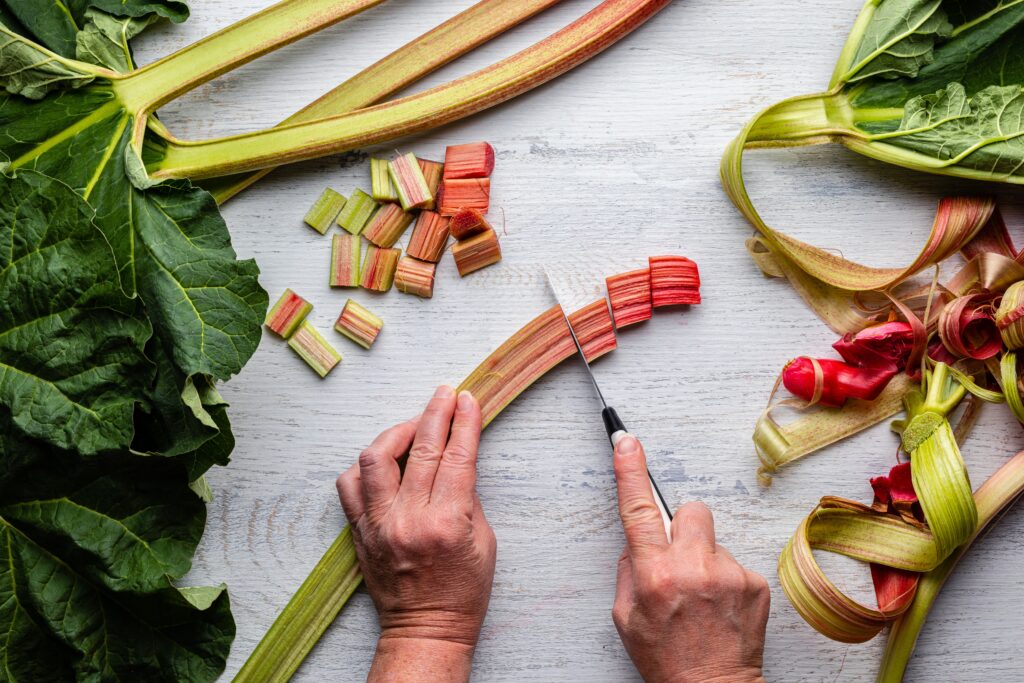
Photo by Maximilian Zahn on Unsplash
Can Rhubarb Be Eaten Raw?
Yes, you can eat rhubarb raw.
There is no reason (such as poisoning) why you can’t eat rhubarb raw; however, some people do find it to be very bitter, crunchy, and tart.
When you cook with rhubarb, you often do so with lots of sugar to reduce the bitterness and help sweeten things out. If you eat rhubarb raw, you tend to skip that step, so you are getting the full whack (as such) of the tartness.
Some people dunk raw rhubarb in sugar and/or cream, in much the same way that you’d dunk strawberries in sugar and cream during summer, whilst watching the tennis at Wimbledon.
For the most part, eating rhubarb raw is down to personal preference. There isn’t a medical reason why you can’t or shouldn’t.
Can You Eat Rhubarb Skin?
Yes, you can eat rhubarb skin.
You can eat all parts of the stem. Just make sure that you avoid the leaves!
Some people prefer to peel the skin away from rhubarb stalks before cutting and/or cooking with them, but that is, once again, down to personal preference. They can be a little fibrous and stringy when cooked.
You can eat rhubarb skin, but you might not enjoy eating it.
Can You Eat Green Rhubarb?
Yes, you can eat green rhubarb.
Green rhubarb is less ripe than red or pink rhubarb, and it will carry more bitterness, which you may need to factor in when creating a recipe with it. The dish may require more sugar (or sugar substitute/alternatives), for example.
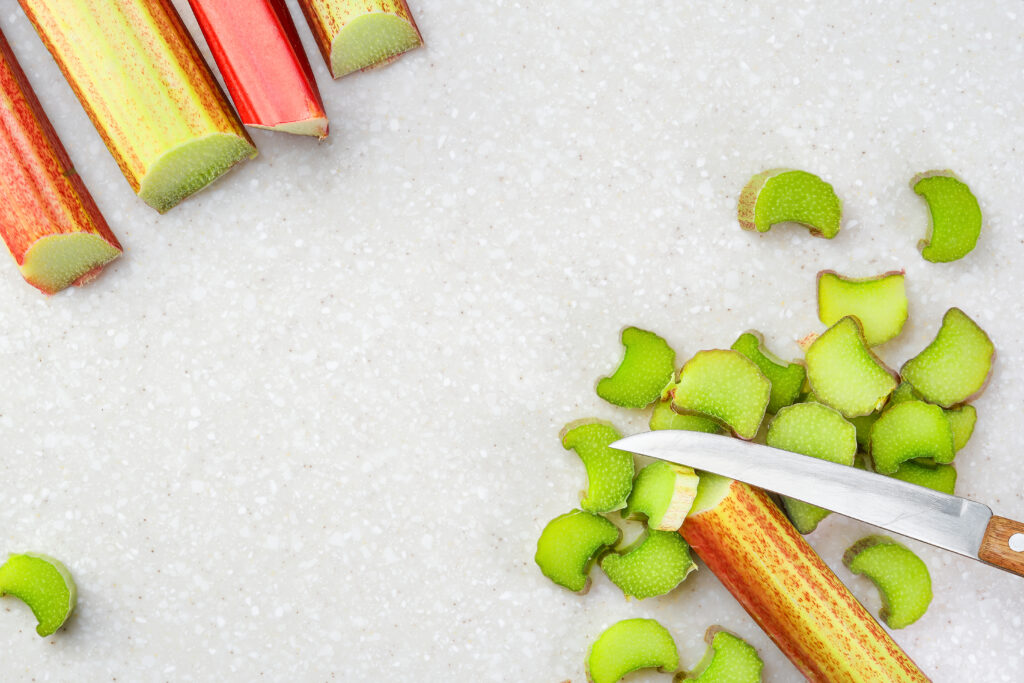
Image by ededchechine on Freepik
As a general rule, rhubarb stalks that are very red or pink are sweeter than those that are still green in colour.
If you want sweeter rhubarb for your crumbles, jams or compotes, leave it to grow and ripen for a little bit longer before you pick it. Don’t forget to make sure that the plant gets plenty of water, too!
Recommended Reading:
Can You Freeze Rhubarb Crumble?
Is Rhubarb a Fruit or a Vegetable? (And Other Rhubarb Facts)
